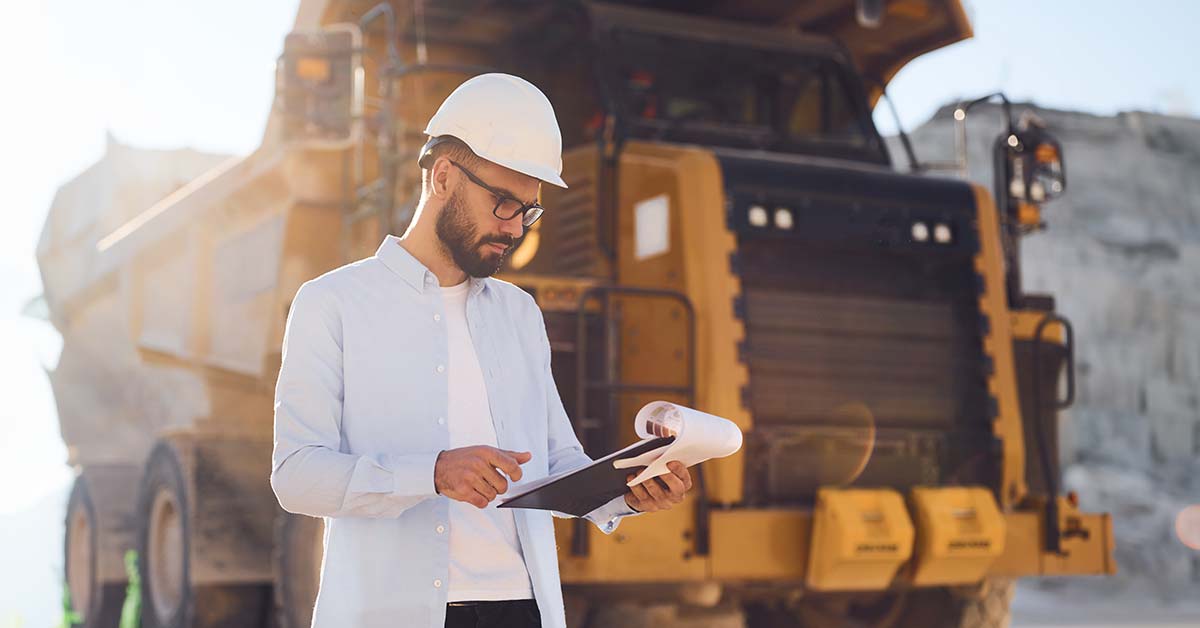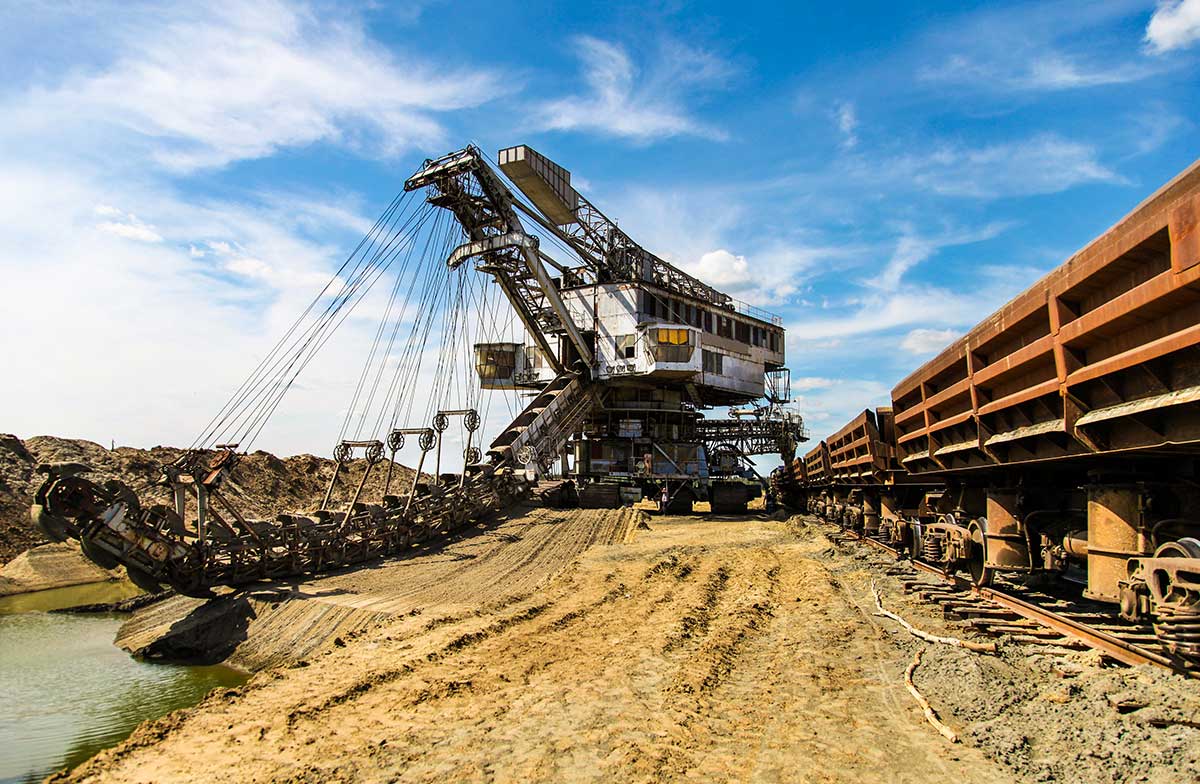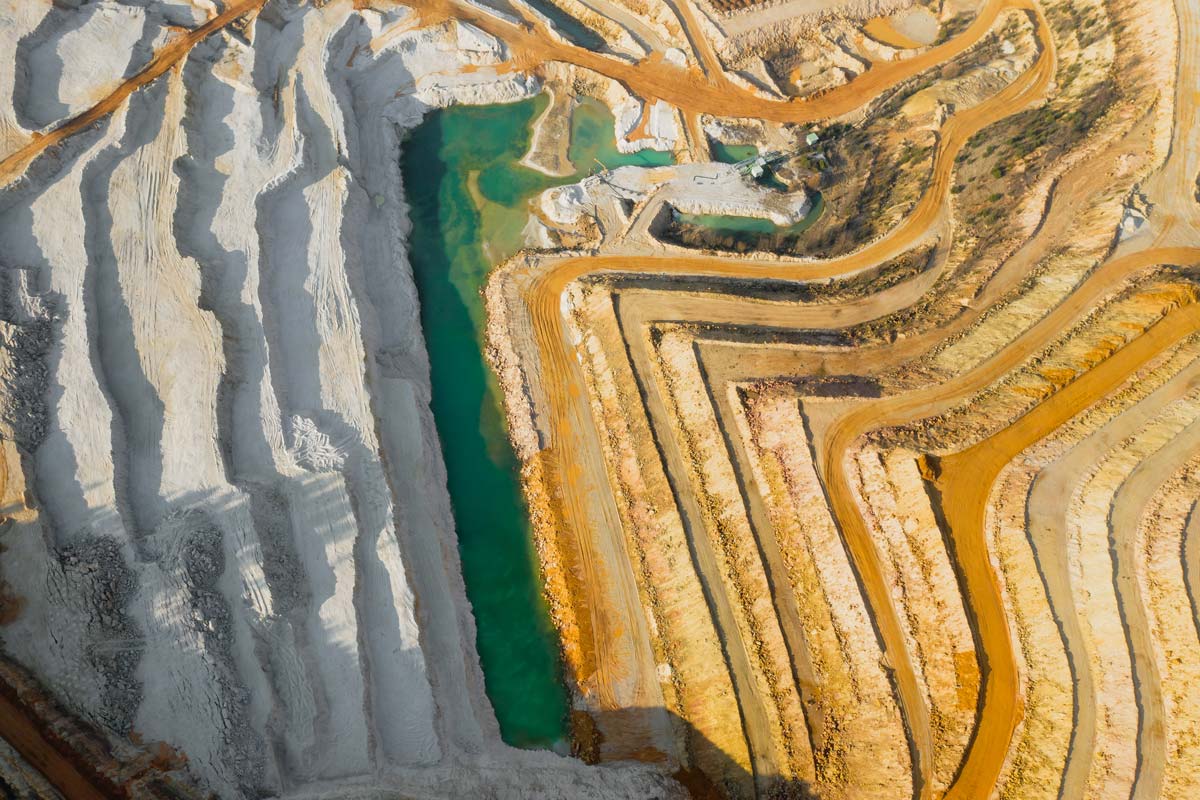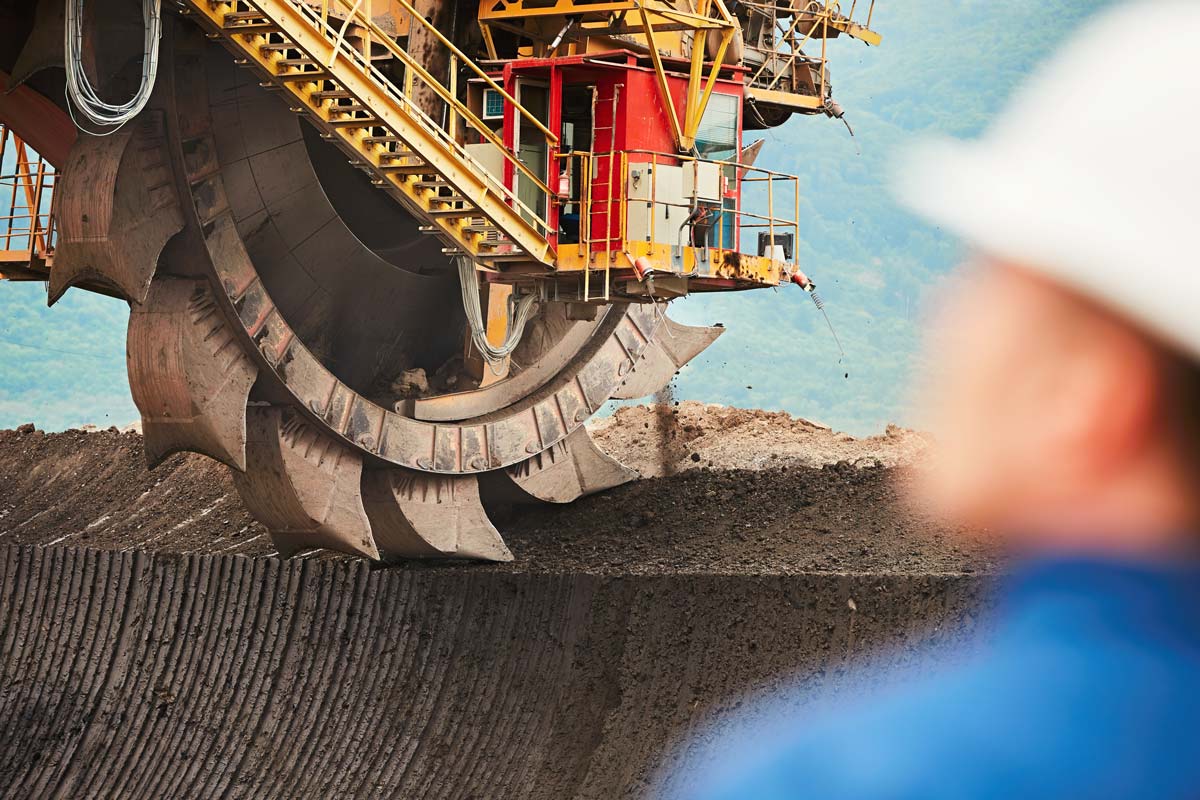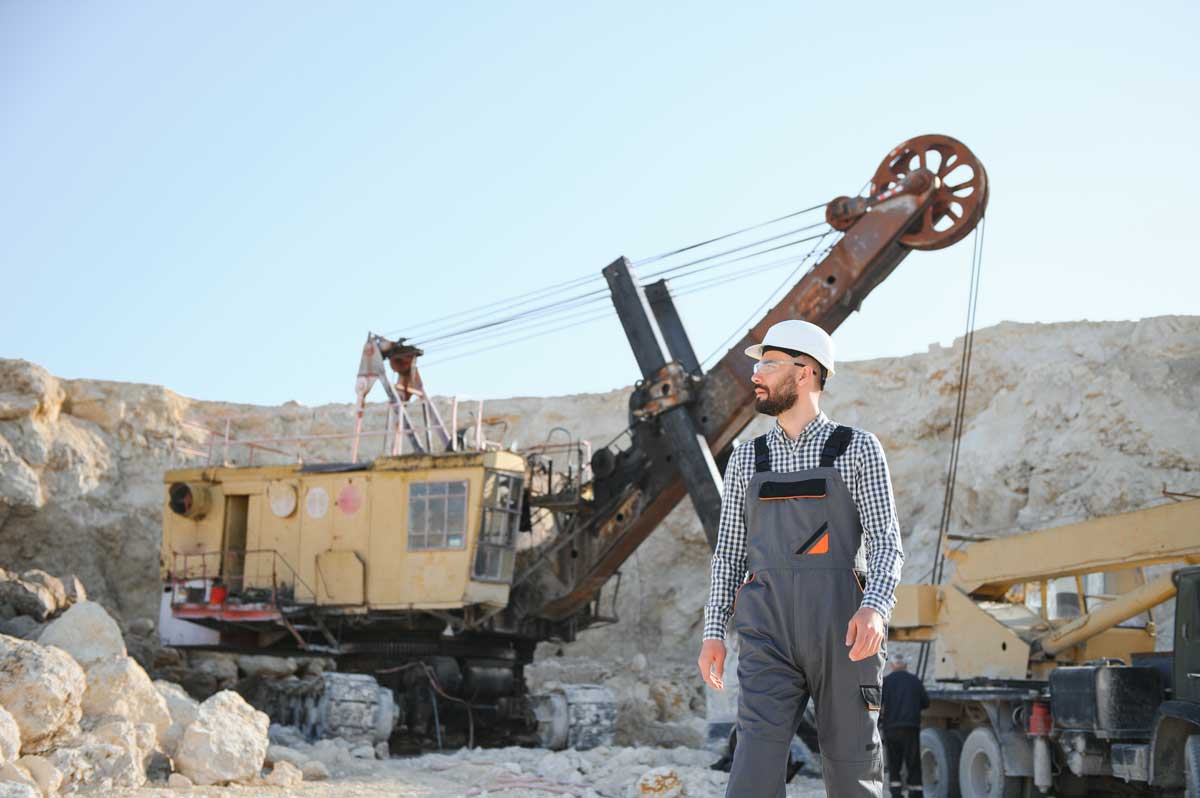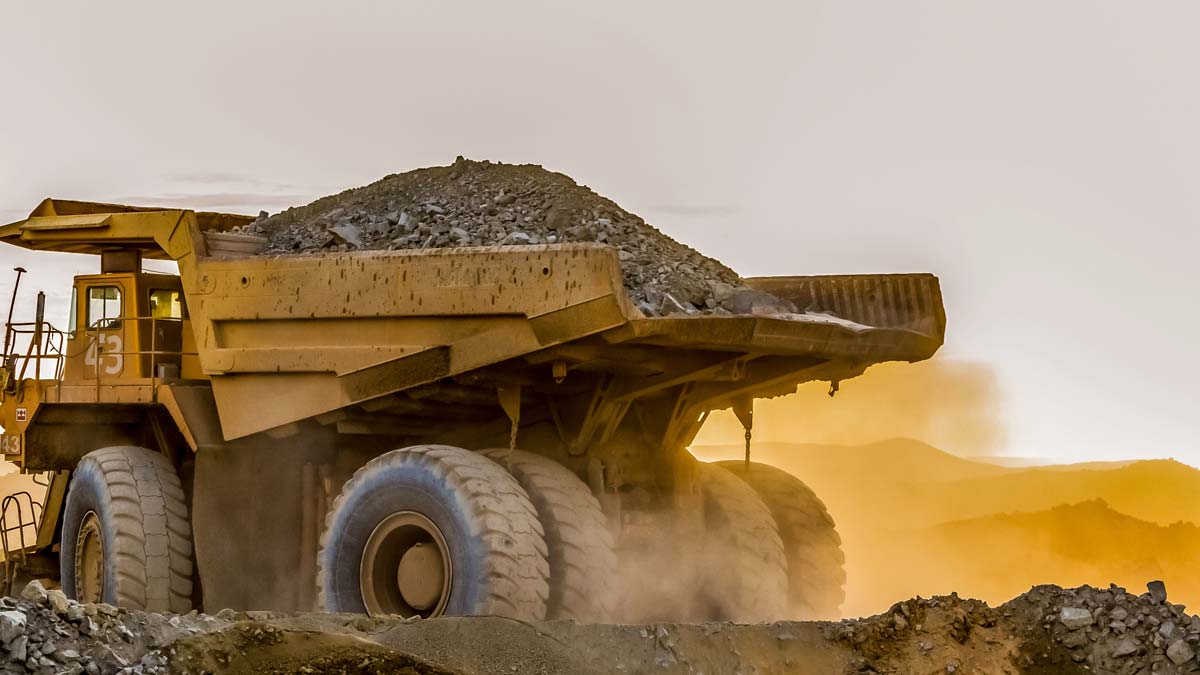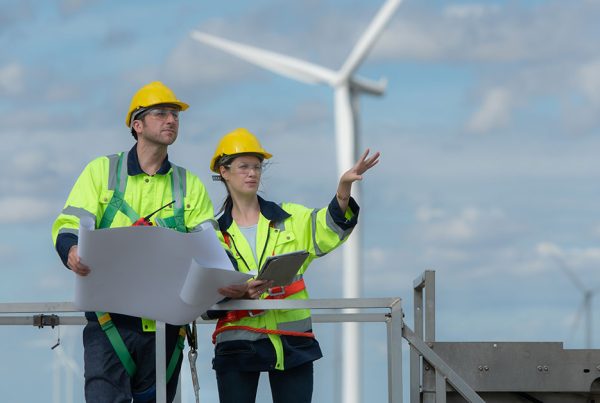The mining sector offers highly profitable investment opportunities but also carries significant risks, making Mining Risk Management essential. The global mining industry’s annual revenue reached a record high of approximately USD 943 billion in 2022, only to fall to USD 792 billion in 2024 due to economic fluctuations.
In such a vast market, mining risks can range from occupational safety to environmental impacts and financial volatility. With the right risk management strategies, companies gain a major advantage in terms of safety, regulatory compliance, and sustainable profitability.
1. Why Risk Management Is Critical in Mining
By its very nature, mining is both a highly valuable and an inherently dangerous industry. Underground operations, the use of explosives, heavy machinery, and harsh environmental conditions make mining one of the riskiest fields when it comes to accidents and operational disruptions.
The Soma mine disaster in Turkey in 2014 tragically illustrated this reality: due to inadequate oversight and flawed risk management practices, 301 miners lost their lives. Such events painfully demonstrate the severe human and financial consequences of neglecting risk management.
On the other hand, investing in risk management protects companies from significant losses by anticipating potential disasters. For example, failing to carry out comprehensive risk assessments and overlooking potential threats can expose companies to losses of millions—or even billions—of dollars, not to mention adverse investor reactions and missed opportunities. This is why risk management in mining is not merely a matter of safety or insurance costs; it is a strategic priority for ensuring business continuity and safeguarding investments.
A practical risk management approach provides tangible benefits to mining companies in several core areas:
Safety: Prioritizing occupational health and safety prevents accidents and fatalities, protecting the lives of workers. A strong safety culture and regular risk audits can help prevent tragedies like the Soma disaster.
Profitability: Proactively managing risks minimizes unexpected downtime and equipment failures, improving efficiency. This prevents significant financial losses and protects against sharp declines in share value.
Regulatory Compliance: Full compliance with legal requirements and industry standards eliminates the risk of fines, sanctions, or forced shutdowns. Mines that meet all obligations enhance their credibility with regulators.
Reputation: Companies that operate safely and responsibly earn trust and prestige among the public and investors. Effective risk management does not only ensure compliance but also plays a critical role in gaining the confidence of investors and financial institutions.
In summary, risk management in mining is an indispensable factor influencing a company’s success across multiple dimensions—from safety to financial performance and reputation management. For companies pursuing high-value resources, managing risks effectively is not just a legal obligation but also the key strategy for long-term profitability and sustainability.
2. Operational Risks: Equipment, Workforce, and Safety Hazards
Risk management in mining encompasses not only occupational safety but also the management of environmental risks, financial uncertainties, and regulatory compliance. This comprehensive approach helps companies align with sustainable mining goals and meet their ESG (Environmental, Social, Governance) responsibilities.
Within this wide spectrum, operational risks—those tied to equipment, workforce, and safety hazards on mining sites—are of particular importance. Operational risk management is critical both for protecting workers’ health and safety and for ensuring uninterrupted production.
Common Causes of Mining Accidents
While it is impossible to completely eliminate accident risks in mining operations, the most common hazards are well known. Cave-ins and roof collapses are among the most serious threats in underground mining. Poorly supported rock layers can collapse, trapping or injuring workers.
Explosions and fires, often caused by methane gas or misuse of explosives, can result in catastrophic damage and fatalities. Heavy machinery used for hauling also poses significant risks; accidents involving large trucks, rail vehicles, or conveyor belts are among the most frequent causes of mining-related deaths.
For example, the U.S. Mine Safety and Health Administration (MSHA) reported that in early 2025, one-quarter of mining fatalities were caused by ground collapses, another quarter by poor maintenance or unsafe equipment use, one by an explosives accident, and another by failure to implement lockout/tagout (LOTO) procedures. These figures highlight the critical importance of ground control, equipment maintenance, and strict adherence to safe work practices.
Equipment Failures and the Cost of Downtime
Equipment failures and resulting unplanned downtime pose not only safety risks but also significant financial risks. The sudden breakdown of a critical machine in a mine can increase accident risks and disrupt production, causing substantial financial losses. Studies indicate that in mining, the average cost of downtime can reach USD 180,000 per incident. In large-scale operations, repairing and restarting a single heavy machine can cost between USD 150,000 and USD 250,000.
These costs explain why maintenance and equipment renewal budgets account for 35–50% of mining companies’ annual expenses. Within operational risk management, preventive maintenance and regular equipment inspections aim to minimize such failures and unexpected stoppages. Otherwise, downtime can cause a combination of lost production and repair costs that put companies under serious pressure.
Workforce Safety: Training, Culture, and Accountability
Occupational health and safety in mining requires both a strong safety culture and a well-trained workforce. The International Labour Organization (ILO) emphasizes the importance of comprehensive OHS frameworks in mining, highlighting regular training, risk analysis, emergency planning, and independent audits as the foundation of safety culture.
Continuous training equips employees to recognize hazards, use equipment properly, and follow emergency procedures. Just as important is embedding a culture of safety across the company. From top management to field workers, everyone must adopt a “safety first” mindset.
In companies with a strong safety culture, employees not only comply with rules but also act proactively to make the workplace safer. Individuals who breach safety rules are immediately warned and reported, ensuring accountability. This way, all employees share responsibility for maintaining a safe environment. Ultimately, a strong safety culture combined with accountability is key to reducing accidents and maintaining operational efficiency.
The Role of Digital Monitoring, Automation, and Predictive Maintenance
Emerging digital technologies are transforming how operational risks are managed in mining. Digital monitoring systems and sensors can collect real-time data from mine sites, enabling early detection of potential hazards. For example, IoT-based sensors monitoring gas levels, vibrations, or temperature can issue warnings before dangerous conditions develop.
Automation reduces human involvement in high-risk tasks, enhancing safety. Autonomous or remotely operated trucks, drills, and loaders can operate around the clock, minimizing accidents caused by human error. These real-time data-driven systems also support rapid, informed decision-making in emergencies.
Predictive maintenance applications are another game-changer. Data collected by sensors installed on machinery is processed with AI-powered analytics to detect signs of failure before breakdowns occur. Maintenance teams can intervene early, preventing unplanned downtime and extending equipment life.
Together, digital monitoring, automation, and predictive maintenance improve both worker safety and productivity. This “smart mining” approach makes operations more efficient and safer while also reducing the environmental footprint and supporting sustainability goals. For example, cloud-based monitoring and data analytics systems allow mines to optimize safety and sustainability performance, track environmental data in real time, ensure regulatory compliance, and prepare for emergencies.
In conclusion, technologies like digital monitoring, automation, and predictive maintenance not only reduce operational risks but also enable mining companies to embrace a more sustainable and ESG-oriented business model.
3. Environmental and Sustainability Risks
Within mining risk management, environmental and sustainability risks—just like occupational health and safety and regulatory compliance risks—rank among the most significant challenges companies face. In this section, we cover waste management and tailings storage, water use and pollution, biodiversity loss and land rehabilitation, as well as ESG (Environmental, Social, Governance) compliance and stakeholder expectations.
Effective management of environmental risks is critical not only for complying with environmental legislation (regulatory compliance in mining) but also for ensuring operational continuity and profitability. Indeed, a recent industry report notes that mining companies have elevated environmental responsibility more than ever, placing special focus on waste, water, and wildlife.
Waste Management and Tailings Storage
The safety of waste management and tailings storage is a critical environmental risk in mining. Operations generate large volumes of waste rock (overburden) and ore-processing residues. These tailings often contain toxic chemicals; for example, cyanide, mercury, and arsenic used in metal extraction can accumulate in tailings ponds.
These wastes are typically stored in tailings dams or ponds; however, leaks or failures in these structures pose major environmental risks. In 2019, for instance, a dam collapse in Brazil led to hundreds of deaths and severe environmental damage. Such disasters underscore how vital robust operational risk management plans are in the mining sector.
To mitigate tailings risks, companies must conduct regular inspections, employ safe designs aligned with international standards, and, where feasible, adopt safer methods such as dry stacking. Thanks to newer technologies, filter-press systems can dewater tailings, recovering reusable water—reducing both overall water consumption and tailings storage risk.
Water Use, Pollution, and Scarcity
Mines use substantial amounts of water for many processes—from dust suppression to ore separation. Excessive consumption, especially in water-stressed regions, can reduce local communities’ access to clean water and create serious issues.
By its nature, mining both consumes and can pollute water resources; water has even been called “the most frequent casualty of mining.” Contaminated runoff from mine sites or discharged effluent can carry heavy metals and chemicals into rivers and groundwater.
For example, acidic water generated by acid mine drainage dissolves heavy metals from rock, potentially polluting surface and groundwater for decades or even centuries. To manage these risks, companies must maximize water recycling, treat effluents, and minimize total consumption. Effective operational risk management also includes optimizing water use and preventing potential pollution.
Biodiversity, Land Rehabilitation, and Long-Term Impacts
Mining activities often cause deforestation, habitat loss, and thus biodiversity decline. Opening a mine can inflict irreversible damage on surrounding ecosystems; for example, mining in a tropical rainforest is far more destructive and long-lasting than in a desert ecosystem. Soil degradation, erosion, and contamination during operations can create problems that persist for decades if mine closure is not handled properly.
For this reason, under sustainable mining, companies should develop mine closure and land rehabilitation plans from the very outset. The goal is to leave the land safe, useful, and as close as possible to its original ecological state once operations end. A well-planned rehabilitation program includes restoring vegetation, backfilling pits, and safely disposing of remaining wastes. This reduces long-term environmental damage and ensures the legacy left to local communities is not a “scar,” but where possible, a beneficial land use.
ESG Compliance and Stakeholder Expectations
Today, investors and other stakeholders expect mining companies to operate in line with ESG principles. In one survey, 36% of industry participants indicated that mining companies with weak ESG performance will face difficulties accessing capital. Investors track how companies manage environmental and social risks; financiers increasingly prefer to provide credit and equity to firms that perform well on sustainability criteria.
This shows environmental responsibility is no longer a “voluntary choice” but a decisive factor, even from a financial-risk perspective. Companies are expected to develop comprehensive ESG strategies—reducing carbon emissions, reporting transparently on waste and water management, and collaborating with local communities.
ESG compliance is indispensable not only to avoid fines and sanctions but also for corporate reputation, capital-raising capacity, and long-term operational sustainability. Mining companies that adopt an ESG approach both ensure full compliance with environmental law—minimizing legal risks—and earn stakeholder trust. Thus, they gain a significant advantage on the path toward the ultimate goal of mining risk management: to operate safely, compliantly, and profitably.
4. Regulatory and Compliance Risks in Mining
In the mining sector, managing regulatory compliance risks effectively is a critical component of risk management. Among mining risks, these compliance risks are essential for operating safely, legally, and profitably.
In this section, we explain why adherence to both national legislation and international standards is important, and the legal, financial, and reputational consequences of non-compliance. Finally, we discuss why continuous internal monitoring of compliance is indispensable for sustainable mining and long-term profitability.
Key National Regulations and International Frameworks
In Türkiye, mining activities are governed by comprehensive legislation, primarily the Mining Law No. 3213, the Occupational Health and Safety Law (No. 6331), and the Environmental Impact Assessment (EIA/ÇED) Regulation. For example, if a mine is found to be operating without the required EIA approval or license, an administrative fine is imposed and operations are halted immediately; repeat offenses can lead to license revocation.
The core objective of these regulations is to control environmental risks in mining operations and minimize occupational health and safety hazards. Internationally, the International Finance Corporation (IFC) Performance Standards and management systems such as ISO 14001/45001 help companies manage risks in line with global best practices.
Similarly, OECD principles aim to foster a strong compliance culture by requiring mining companies to avoid bribery and maintain financial transparency as part of ESG-aligned governance.
5. Financial and Market Risks
Mining risk management is a holistic approach that encompasses many dimensions, including operational risk management, occupational health and safety in mining, environmental risks in mining, and regulatory compliance. Financial and market risks are just as critical as these other risks, since they directly affect a mining company’s profitability and long-term sustainable mining goals.
In this section, we will address financial risks in mining, ranging from commodity price volatility and global demand cycles to supply chain disruptions and geopolitical uncertainty. We will also discuss the financial instruments and hedging strategies used to mitigate these risks.
Commodity Price Volatility and Global Demand Cycles
One of the most fundamental financial risks in mining is sharp fluctuations in commodity prices. Metal and mineral prices are extremely volatile; annual price swings of 30–50% are considered normal for core metals like copper and gold, while battery metals such as lithium can rise or fall by more than 200% within just 12 months.
Such extreme volatility can disrupt revenue projections, make cash flow forecasting difficult, and directly impact profitability.
Commodity markets are also cyclical; since the 2000s, mining commodity prices have gone through roughly five boom-and-bust cycles, with each peak followed by a sharp price decline.
Global demand cycles are a major driver of these swings: during periods of rapid industrialization (such as China’s surge in raw material demand), prices may remain in an upward trend for years, while global recessions or crises can cause demand to contract and prices to collapse suddenly. Experts predict that due to factors like declining ore grades and rising costs, similar cycles will persist in the coming years, with even greater volatility within each cycle.
This cyclical nature makes strategic planning especially difficult for mining companies. A firm that cuts back investments during a low-price period may reduce its capacity and miss opportunities when demand rebounds. Conversely, one that expands too aggressively during peak times may struggle with debt burdens when prices fall.
Therefore, managing commodity price risk requires companies to align capital planning with these cycles and maintain strong financial reserves.
Supply Chain Disruptions and Geopolitical Instability
Global supply chain disruptions and geopolitical instability also pose serious market risks in mining. Pandemics, wars, or logistics crises can interrupt supply chains, leading to unexpected cost increases. For example, port congestion, labor strikes, or international sanctions may delay mineral shipments, disrupting deliveries to customers and straining cash flow.
Geopolitical uncertainty can also suddenly destabilize markets. Many mining operations are located in countries with low political stability or unpredictable regulatory frameworks, which can create valuation gaps of up to 40% between similar projects.
Resource nationalism—policies such as export restrictions, high royalties, or mandatory local partnerships—can shrink global supply and drive up prices.
For instance, following Russia’s invasion of Ukraine in 2022, nickel prices tripled in a single day, forcing the London Metal Exchange to suspend trading. Similarly, Indonesia’s 2014 and 2020 bans on nickel ore exports radically reshaped global supply chains; instead of exporting raw ore, the country incentivized local processing, compelling companies to invest over $15 billion in domestic facilities.
Although such external shocks lie beyond companies’ control, their financial impact can be so severe that proactive risk mitigation planning is essential.
Mining firms apply various strategies to reduce risks from supply chain disruptions and geopolitical instability. These include diversifying suppliers and shipping routes, establishing alternative logistics channels, securing robust contracts, and preparing contingency plans. Such measures reduce dependence on a single country or supplier, making companies more resilient to market and geopolitical shocks.
Some major metal producers, for example, source critical equipment and consumables from multiple suppliers or maintain strategic stockpiles to prepare for supply interruptions.
Focusing on sustainability and ESG mining principles can also provide reputational and compliance advantages that safeguard operational continuity. In recent years, many mining companies have emphasized sustainable practices and socio-environmental programs to strengthen stakeholder trust and weather market volatility. Strengthened community relations and exceeding regulatory expectations can help mitigate the financial impact of politically or socially driven disruptions.
Financial Instruments and Hedging Strategies
One of the most important ways to manage financial risks in mining is through hedging—using financial derivatives to protect against commodity price fluctuations. Many mining companies use futures contracts, forward sales agreements, or options to lock in predetermined prices for their metals and minerals.
For example, a copper mine might secure a forward sales agreement today for delivery in six months at a fixed price. Even if market prices fall by then, the mine’s revenue is guaranteed, while the buyer secures a stable purchase price for needed supply.
Such hedging strategies provide predictable cash flows and are particularly vital during price downturns. Well-structured hedge programs can strengthen a project’s resilience to market shocks and make it more “bankable” (financeable) in the eyes of creditors.
Research shows that hedging protects mines from sharp price declines, increases their debt capacity, and helps improve return on equity. For this reason, many financiers require new mining projects to hedge a certain percentage of production as a condition for lending.
Hedging strategies extend beyond commodity prices to cover exchange rate, interest rate, and energy price risks. For instance, when companies operate in one currency but sell in another, they may use currency forwards or options to limit foreign exchange risk. Similarly, they may hedge against rising interest rates with swaps or against volatile fuel prices with oil derivatives.
By managing these variables—currency, interest, and energy—alongside commodity price risks, companies strengthen overall financial stability.
Of course, hedge programs must be carefully structured. Poorly designed or overly speculative hedges can backfire. For example, hedging too much of production with complex derivatives, taking oversized positions, or focusing on only one scenario can cause significant losses if the market moves in the opposite direction.
Therefore, companies should design hedge programs that align with production plans, are easy to understand, and provide protection in both rising and falling price scenarios. Hedge instruments (futures, options, etc.) should be stress-tested against all possible market conditions. Companies must avoid speculation and ensure their transactions are focused solely on risk reduction.
In conclusion, no financial instrument can entirely eliminate market risks in mining. However, a well-structured hedging program can provide the flexibility to smooth revenue impacts from extreme price volatility. This buys companies critical time to continue operations during turbulent periods. Hedging instruments against financial and market risks are thus an inseparable part of mining risk management, giving firms the confidence and flexibility to execute strategic decisions even in uncertain environments.
6. Social and Reputational Risks
Risk management in mining covers a wide range of areas, from operational risk management practices and environmental safeguards to occupational health and safety protocols, financial risks, and regulatory compliance.
Among all mining risks, however, social and reputational risks are just as critical as the others. In this section, we will examine why maintaining a social license to operate (community approval), engaging effectively with local populations and especially indigenous communities, and adopting corporate social responsibility (CSR) should be considered proactive defense mechanisms for mining companies.
The Importance of a Social License to Operate
The long-term success of a mining operation depends not only on legal permits or technical capacity but also on an informal community approval known as a social license. The support and acceptance of local residents and stakeholders are prerequisites for uninterrupted and efficient operations.
A report prepared by Ernst & Young emphasized that gaining and maintaining social approval is one of the greatest risks facing the mining industry. This finding highlights how seriously mining companies must take reputation management and community relations.
Industry experts stress that companies wishing to build and sustain strong community approval must integrate sustainable mining principles into their long-term planning and align technical and financial goals with social and environmental policies.
The concept of social license begins in the project’s planning phase and must be nurtured throughout the life of the mine. A company that disregards local concerns about health, environment, and quality of life cannot succeed.
In other words, government permits alone are not sufficient; without community consent, sustainable success in mining is impossible. Otherwise, companies may face protests, work stoppages, and even legal cancellations. Conflicts with stakeholders can result in halted projects, production disruptions, and additional regulatory restrictions.
For these reasons, maintaining a social license is an indispensable component of any mining risk management strategy.
(Example: A mining project may hold informational meetings where company representatives and government officials meet with local communities to explain the project and listen to their views. Such dialogue helps build trust and secure social license.)
Community Engagement and Respect for Indigenous Rights
To sustain a social license, mining companies must carefully manage community engagement processes. This means implementing transparent communication strategies from the start of a project and including local communities in decision-making. In Turkey, for instance, public consultation meetings required under the Environmental Impact Assessment (EIA) regulations provide a legal mechanism to inform and hear from local residents.
However, community engagement should not be limited to legal formalities. Companies must actively listen to local concerns and offer realistic solutions. Respecting the rights of indigenous peoples is also a non-negotiable element of international mining norms.
For example, the principle of Free, Prior, and Informed Consent (FPIC), adopted in many countries, requires that local and indigenous communities give their consent before a mining project begins. Failure to comply with FPIC can result in serious human rights violations. In one recent case, advancing a mining project without indigenous consent drew sharp international criticism and demands that FPIC standards be upheld.
Building strong relationships with both local and indigenous communities reduces social risks throughout the life of the project.
Effective community engagement and communication can be achieved through:
Early and continuous dialogue: Holding regular meetings and one-on-one discussions with local residents from the very beginning to build trust.
Transparency: Clearly communicating potential environmental risks and occupational health and safety measures, along with mitigation steps, to reassure the community.
Local development support: Prioritizing local employment and contributing to the local economy through training programs and infrastructure investments.
Cultural sensitivity: Respecting the cultural heritage and living spaces of local and indigenous populations, and adjusting project plans where necessary.
These steps help build trust and prevent reputational risks before they even arise.
Corporate Social Responsibility as a Proactive Defense
Corporate social responsibility (CSR) functions as a proactive line of defense against social risks in mining. CSR initiatives—whether social, environmental, or economic—demonstrate that a company is not solely profit-driven but also values the community and environment in which it operates.
This significantly strengthens corporate reputation. Today, CSR and communication initiatives are no longer merely promotional tools in mining but are directly recognized as instruments of risk management and stakeholder engagement.
For instance, CSR projects, publishing sustainability reports, adopting human rights policies, and embracing ESG (Environmental, Social, and Governance) principles all help build stakeholder trust. Companies that align with and report on international initiatives gain credibility both in the eyes of the public and investors.
CSR activities also help prevent conflicts and misunderstandings from arising in the first place. Supporting local schools, healthcare centers, or environmental protection programs can positively influence public opinion and reduce tensions.
While such investments may appear as additional costs in the short term, they yield long-term benefits by preventing operational disruptions, regulatory sanctions, and reputational damage. Ultimately, integrating CSR and sustainability policies into mining risk management solidifies community support and lays the foundation for safe, compliant, and profitable operations.
7. Strategies for Effective Risk Management in Mining
The mining industry is inherently high-risk and faces multidimensional threats. Various mining risks—such as operational disruptions, workplace accidents, environmental disasters, market volatility, and regulatory non-compliance—can negatively affect company operations, worker safety, and the environment.
In particular, risks related to occupational health and safety and environmental risks in mining carry great significance. Likewise, sudden changes in financial markets (financial risks in mining) and the need to comply with new regulations (regulatory and compliance risks in mining) can threaten a company’s success. For example, failure to comply with environmental or social regulations can lead to administrative fines, suspension of operations, and reputational damage.
Therefore, Risk Management in Mining is a vital strategic element that enables companies to operate safely, in compliance, and sustainably.
Below are key strategies and approaches for mining companies to manage risks effectively:
Enterprise Risk Management (ERM) Frameworks
Instead of handling risks in silos across different departments, the Enterprise Risk Management (ERM) approach addresses all risk types within an integrated framework. ERM embeds risk-based thinking into every function—strategy, finance, operations, safety, and compliance—so the organization can identify, assess, and mitigate risks company-wide.
In high-risk sectors like mining, weaknesses in risk management can lead to serious accidents, environmental harm, or substantial fines. With ERM, risk awareness and accountability become part of the company’s DNA—not just the remit of safety or compliance teams.
In recent years, global industry studies show that ESG (Environmental, Social, and Governance) factors and pressure to reduce carbon emissions have become top risk themes in mining. This requires companies to expand their ERM frameworks to fully include ESG-related mining risks. Firms with strong ERM are more resilient to economic volatility and supply-chain shocks, better prepared for regulatory scrutiny, and gain competitive advantage by making daily decisions informed by risk. Ultimately, ERM makes risks visible, measurable, and proactively manageable, supporting growth and resilience goals.
Technology-Driven Risk Reduction: IoT, AI, and Drones
Advancing technologies are transforming risk reduction in mining. IoT sensors and AI-enabled analytics make 24/7 operational risk management possible at mine sites.
For example, smart sensors installed in underground drifts and on equipment continuously track temperature, gas concentrations, and vibration. Advanced analytics and AI process these data in real time to predict hazards—such as rockfalls, roof collapses, toxic gas buildup, or equipment failure—before they occur, alerting managers and enabling preventive action.
Likewise, the use of drones in mining provides critical safety and efficiency benefits. Unmanned aerial vehicles allow remote inspection of hard-to-reach, hazardous areas, reducing worker exposure. Drones equipped with high-resolution cameras and LiDAR can rapidly and accurately map mine sites, enabling routine aerial inspections of open-pit slopes, underground entries, and tailings facilities. Structural cracks or weaknesses can thus be identified and addressed before harming people or the environment.
Drones also monitor environmental indicators—such as vegetation health, water pollution, and air quality—providing an early-warning system for environmental risks in mining. Real-time data improves rehabilitation planning and helps companies maintain regulatory compliance.
These technology-driven approaches enhance both safety and environmental performance, significantly reducing mining risks. Experts recommend leveraging advanced technologies, training employees to use them, and making proactive, data-driven decisions for comprehensive risk reduction.
Insurance and Financial Safeguards
Given project uncertainties, insurance and financial risk management tools provide critical protection. Mining companies should transfer potential losses through specialized policies covering property damage, business interruption, workers’ compensation, environmental liability, and third-party liability.
An effective risk-financing strategy carefully balances which risks to transfer via insurance and which to retain. To lower costs and improve coverage, companies may consider parametric insurance or captives as alternative risk-transfer methods, and negotiate policy terms through brokers.
Regular audits of existing policies and gap analyses are essential to identify uninsured exposures and address them with additional coverage or controls.
From a financial perspective, commodity price volatility and foreign-exchange fluctuations are prominent financial risks in mining. To manage these, companies can use futures or options to hedge price risk and set aside emergency reserves for contingencies. In combination, these measures create comprehensive protection for both physical operational risks and financial risks, supporting the project’s economic sustainability.
Building a Resilient Culture: Leadership, Training, and Transparency
At the core of effective risk management lies organizational culture, as important as technology and procedures. Senior leadership plays a critical role in establishing a culture that prioritizes safety and risk management. Clear commitment—especially to occupational health and safety—signals to all employees that these issues are non-negotiable.
The 2014 Soma mining disaster was a painful lesson in how insufficient oversight and flawed risk management can end in tragedy; after 301 miners lost their lives, occupational safety culture and standards across the country came under scrutiny. To prevent such tragedies, leaders must act proactively, avoid deferring safety investments, and pursue continuous improvement in risk management.
Training and engagement are indispensable for a resilient culture. The International Labour Organization (ILO) recommends comprehensive OHS systems for mining, including regular training programs, detailed risk analyses, emergency action plans, and independent audits. Companies should provide onboarding training, safety drills, and risk-awareness sessions to ensure preparedness.
For example, in Türkiye, Koza Altın introduced advanced gas-monitoring systems, conducted periodic emergency drills, and encouraged worker representatives to participate in decision-making. This improved safety performance and helped institutionalize a strong safety culture.
Equally important is fostering an environment where employees and managers can openly report accidents and “near misses,” learn from them, and transparently improve processes. Such a transparent and participatory culture boosts morale and trust while strengthening reputation with stakeholders—facilitating the social license to operate.
Conclusion: Implemented together, these strategies—adopting ERM frameworks, leveraging next-generation technologies, securing insurance and financial safeguards, and building a strong safety culture—enable effective control of risks in the mining sector. Robust risk management reduces accidents and environmental incidents, increases operational efficiency, minimizes compliance issues, and strengthens a company’s long-term value-creation capacity. Ultimately, sustainable mining and long-term success belong to companies that manage their risks well.
If you need professional support in mining risk management, Teolupus is here to help. Our experts can provide tailored services in operational risk management, environmental risk assessments, financial risk analyses, and compliance audits.
For safer and more sustainable mining operations, contact us by email or phone to learn more. Let’s work together to secure your company’s future through successful Risk Management in Mining.
References
Teolupus. (2024). Madencilikte Risk Yönetimi.
Canadian Mining Journal. (2023). Risk Management: The Billion-Dollar Stakes of Overlooking Mining Risks.
Heavy Vehicle Inspection. (2023). Mining PM Software: Equipment Downtime Reduction.
Metal Tech News. (2023). New Mining Tech Enhances Safety, ESG.
Earth.org. (2023). Environmental Problems Caused by Mining.
White & Case. (2024). What Does It Mean to Be a Responsible Mining & Metals Player?
Kumi Consulting. (2024). OECD Due Diligence: Implications for Large-Scale Mining.
Göçük.com.tr. (2023). Administrative Fines and Appeals under the Mining Law (Türkiye).
Discovery Alert. (2025). Mining Stocks: Evaluating Risk and Reward.
McKinsey & Company. (2023). Through-Cycle Investment in Mining.
Farmonaut. (2025). Global Mining Industry Overview 2025: Supply Chain Insights.
LBMA (London Bullion Market Association). (2002). The Challenges of Hedging. Alchemist, Issue 66.
Kynection. (2023). A Complete Guide to Enterprise Risk Management (ERM).
Ernst & Young (EY). (2023). Enterprise Risk Management in Mining and Metals.
MiningDoc. (2025). Enhancing Mining Efficiency and Safety Through Advanced Drone Technology.
Bu gönderi şu adreste de mevcuttur: Türkçe

